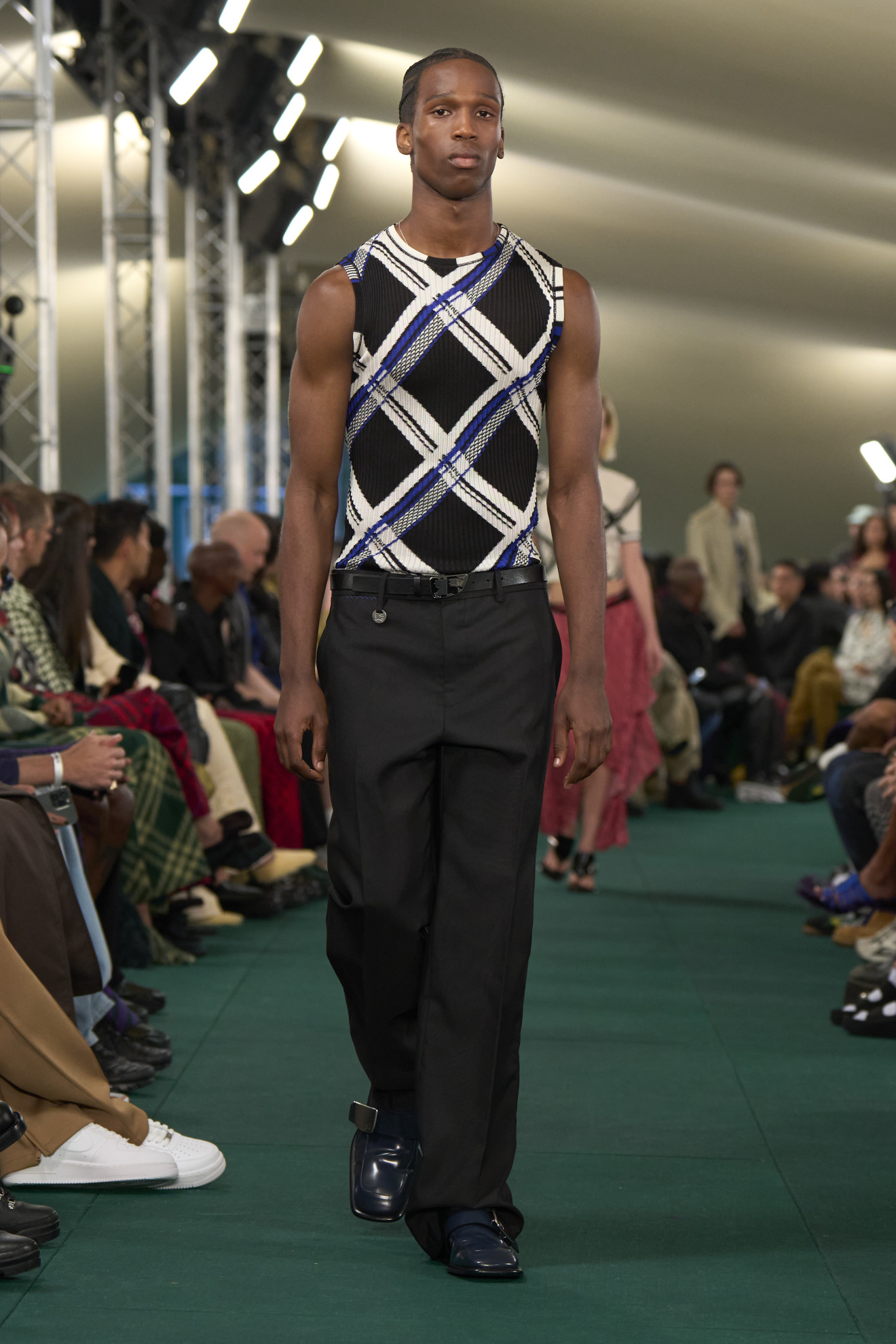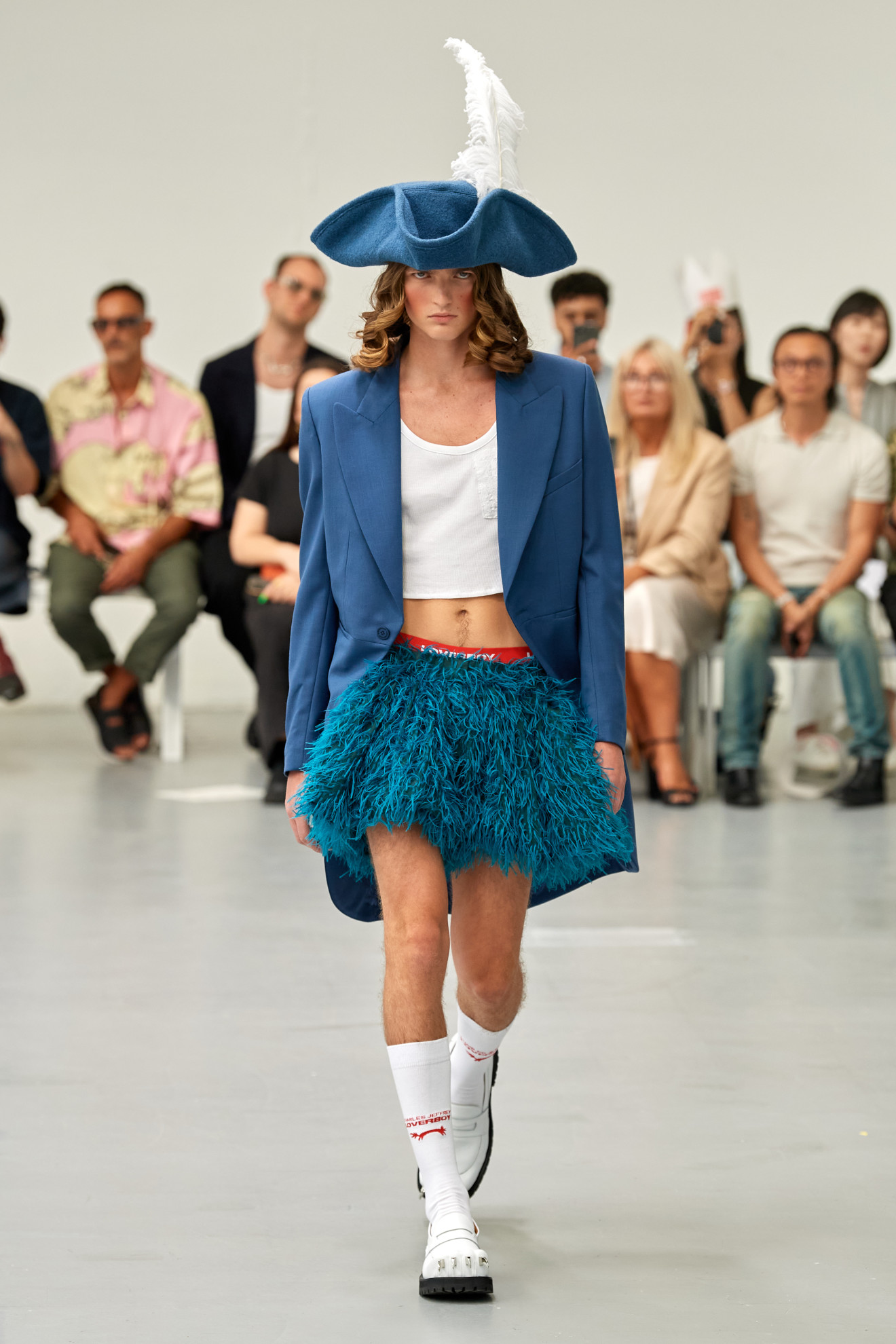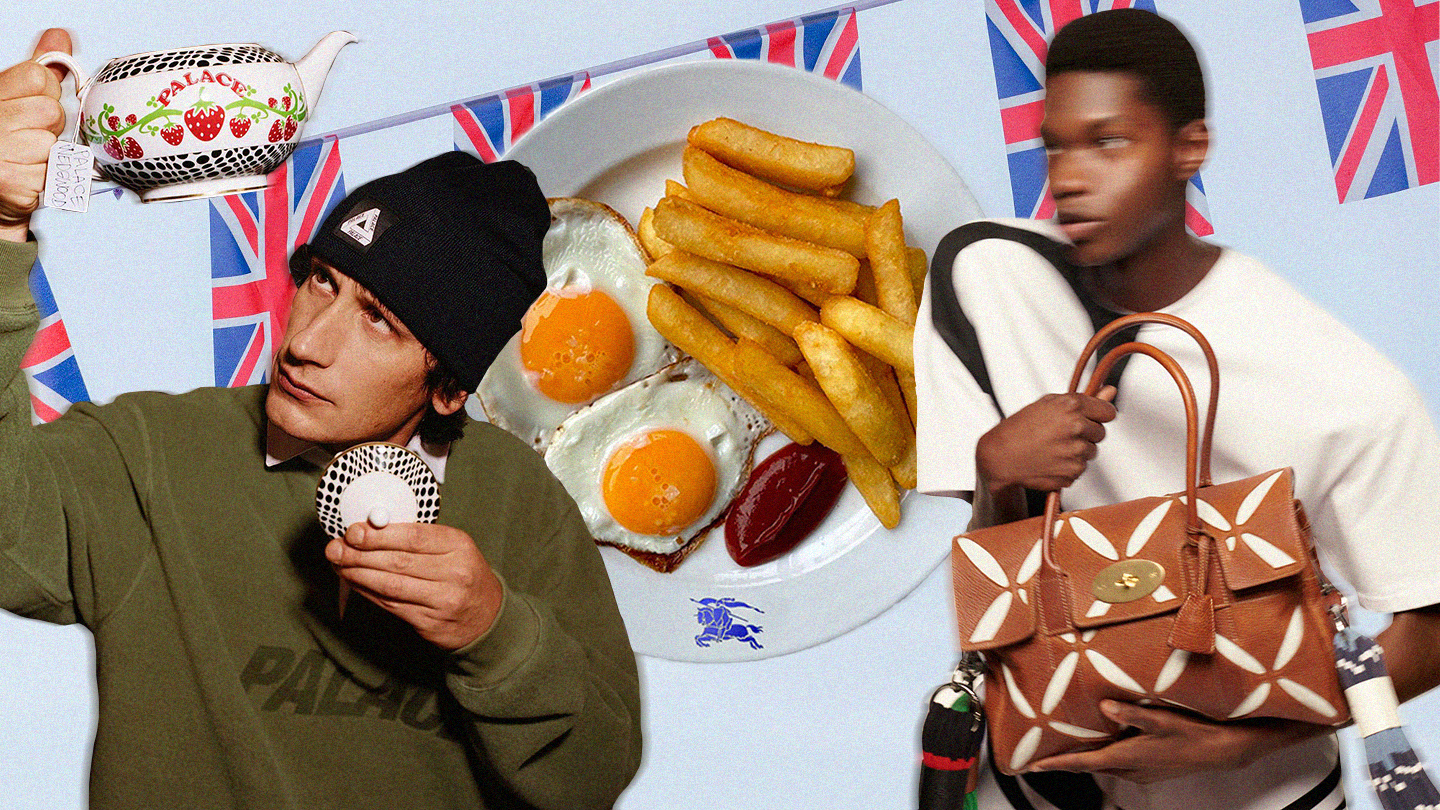British fashion and Bri’ishness have a funny old relationship – one defined by a messy mix of pride and proxied embarrassment alike. But, being Brits, our designers plough on, smiling through gritted teeth as they churn out hot-shit collections despite a less-than-favourable industrial infrastructure for rag traders, the woeful consequences of Brexit and inflation, and a national heritage founded on neoliberalism and colonial conquest. Chic, right?
Of course, it’s not all doom and gloom in this love-hate situationship. Quite the opposite. Chez Britain, designers are finding novel ways to embrace their sense of Britishness. Granted, British pride (yikes!) has long been part and parcel of UK fashion, but not like this. Odes to Albion were either raucous, double-entendre celebration-cum critiques à la Vivienne Westwood and her motley crew of punks; or, this side of the century, an academically informed approach exemplified by the likes of Wales Bonner or Bianca Saunders, who highlight the wealth that the various post-colonial diasporas that have settled here have created. The shift we’ve witnessed more recently, however, is perhaps the most earnestly proud, offering a diverse and democratic vision of life on the archipelago, acting like the great leveller we need. From Burberry’s take on the greasy spoon or Palace’s propah barber shop experience, the big dogs are leaning into tradition but making it work for them.

Indeed, under Yorkshireman Daniel Lee, Burberry has gone all out on the brand’s ultra-British history, a move that fashion’s hive mind had almost invoked in the anticipated lead-up to his freshman and sophomore collections. His first act, reigniting the once-demonised check in a hearty trove of colourways akin to traditional Scottish tartans, was bold. But through his careful creative direction at large, he’s positioned it as a symbol of Britain that traverses class lines, applying it to countrified essentials including hot water bottles and shawls for AW23 or preppy-twink sweater vests for SS24. All the while, his visual campaigns have called on celebrity culture’s working-class heroes, middle-class treasures and fashion-world aristocrats, from Kano to Mary Berry via Jean Campbell.
The recent partnership with buzzy North London eatery, Norman’s Cafe, was a telling move, dipping into the old English institution of a cheap but cheerful fry-up, placing the Horseferry logo beside your usual “two-egg, two-bacon, two-sausage and all the rest” setup, as if to say that everyone loves a full English, just like everyone loves Burberry. Certainly, this was the thinking when Burberry renamed Bond Street station to Burberry Street station, presenting the brand as an integral part of London life – for Britain, by Britain. “Where in the recent past, Burberry has shown its vision of Britain primarily from outside the nation-state, Lee’s vision comes from within the UK, and shows his sense of inclusivity,” says Dr. Sian Weston, author of The Changing Face of Burberry (2022). “Lee creates a sense of ease and joy, even through the [SS24] show catering, where guests were offered a warming cup of tea and an Eccles cake.”
In a similar manner to Burberry, Palace has been shaking up old concepts of Britishness in favour of something less snobby and more attuned to the brand’s Turkish-British founder and designer Lev Tanju’s own experiences of growing up here. Take, for example, the Harrods collab of 2021. For many, the department store is high-society luxury embodied, home to personal shoppers and a past rooted in British celebrity and pomp, counting close ties to Princess Di and the royals at large. However, Palace tapped into this cultural mythology, crystallising its populist appeal. Sure, you might be an anti-monarchist or against gross displays of grandeur, but the camp spectacle that makes Harrods Harrods is all too enticing. After all, every Brit has sweet memories of the terracotta palace, whether they can afford its wares or not.
For Lev, it’s companies like Harrods, the fuddy-duddy homeware brand Wedgwood, or salt-of-the-earth footwear brand Tricker’s, that characterised many early experiences, making them natural collaborators. “They are all just ingrained into me from my childhood, I think, and teens,” he says. “My nan and mum had talked about Wedgwood before and were in the restaurant business, so plates were a thing. Harrods was like the pinnacle multi-brand retail store growing up in the 90s. Then, Tricker’s, in my 20s working in the Duffer shop, were just what people I looked up to were wearing.” Crucially, part of Lev’s impact working with such household names is not only democratising the British experience, but also diversifying it. The recent Barbour campaign, shot in one of the many Turkish-run barber shops in London, speaks to this, placing a brand tied to old English outdoor pursuits and landed gentry on a level playing field with ‘the people’.

Another Wedgwood collaborator, Charles Jeffrey Loverboy, has also been thinking long and hard about what it means to be British, especially in today’s climate. Defacing the usually quaint and staid crockery of Wedgwood with his own punk-inflected touch, Charles has elsewhere leant into the history of lords and ladies, homing in on the 17th-century style of Caroleans (those living under Charles I) and tweaking it with elaborate and kitsch touches — be that the cool blue paillette-strewn, wide-belted bras or shaggy turquoise skirts. “While researching this collection, the Queen had died, and suddenly we were thrust into having a king without a choice, our political system was in upheaval because of Liz Truss, and the whole rigmarole that was happening there,” says Charles. Using satire — the perennial crutch of sarky, snarky Brits — he created a uniform for New Caroleans (that’s us). “We’re very good at criticising people at the top, through caricatures, cartoons, poking fun, and I like the idea [of] Loverboy being a jolly jester, if you will.”
Such labels are, of course, just some of many punching up, queering or re-envisioning what it means to be British, and exposing its very myths: Britishness is infamously not really that British, and so much of what dominates British culture still elides marginalised groups. Martine Rose’s work with the English women’s football team is a case in point. As was her homage to the local community centres of London for SS24, celebrating migrant cultures’ role in making London so London. Likewise, the Stella Artois beer she plied her guests with at the show might call to mind very British sensibilities – “Fancy a few Nelson Mandelas with the fellas?” cry the bloke-core boys – but it’s yet another export (Belgian, this time) we’ve somehow made an emblem of Britain. Also exemplary of this shift, Stefan Cooke’s SS24 collection reworked the upper-class, uniquely British variant of quiet luxury, Mulberry handbags, decking designs with oversized bows and tatty trinkets for a queerer, silly-frilliness as a foil to the usual restrained elegance.
And so, for now, we might conclude that being British is cool — provided you do so with tact. A clumsy, catch-all Cool Britannia of the Blairite late-90s, this ain’t. Instead, to nail the trend, you’ll need to keep consistently abreast of the complicated, ever-loaded cultural conundrum that is Britishness and everything that entails. Lazy references to tired archetypes no longer cut it. You need to be both dissecting the current face of Britain, and presenting a brighter, richer alternative. Do that, and you will, as the old British adage goes, be quids in.
